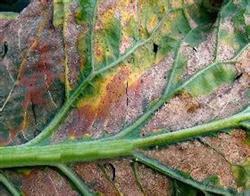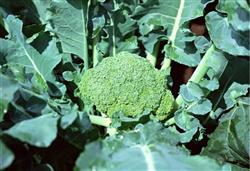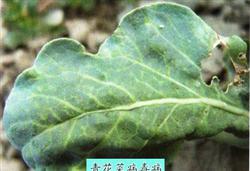Cauliflower planting technique

Cauliflower should be planted in cloudy or sunny afternoon and watered thoroughly after planting. Transplanting should not be too deep, the nutrition cup soil should be parallel to or slightly higher than the face soil, and enough fixed root water should be applied. If the soil is dry for a long time, it is best to fill the trench with enough water and wet the surface before transplanting, so as to reduce the soil temperature. Ploughing once after slow seedling, and watering. If there are too many Rain Water and the humidity of the field is too high, more ploughing should be carried out to keep the roots dry and loose and ventilated. Often many cauliflower fields grow slowly or even stop growing because they are too wet. Cauliflower fields should not only be kept moist, but also loosen the soil and weed in time. Cauliflower is prone to downy mildew at seedling stage and under the conditions of high temperature and high humidity in the field, which can be controlled by spraying chlorothalonil, Dysen zinc, Ruidu, Shidufan, Kelu, Anke and so on. Cauliflower is prone to pests such as cabbage worm, diamondback moth, yellow striped beetle and so on. Deltamethrin, dimethoate, chlorpyrifos, Regent, avermectin, Bt, Nongdile and other pesticides can be used to control them.
- Prev

Efficient planting of eggplant, lettuce and broccoli
Green cauliflower, also known as broccoli, is a kind of health vegetable with complete nutrients and high economic value. it has a long supply period, can be frozen and dehydrated in addition to fresh food, and has high production efficiency. First, the variety selection ① Green Ridge: the growth period is 100mi 120d, the growth potential is strong, the plant is tall, the lateral branch growth is medium.
- Next

Pollution-free control of aphids in cauliflower vegetables
Virus disease is the main disease of broccoli, which is common and serious. Now the incidence law and control methods of the disease are introduced as follows: first, the incidence regularity in winter does not grow cruciferous vegetables, the virus overwintered on stored cabbage, cabbage, radish or overwintering spinach, and planted cruciferous vegetables in winter.
Related
- Where is it suitable to grow horseradish in China? it is expected to see the middle altitude horseradish in Alishan.
- How to prevent tomato virus disease reasonably? (Control methods included)
- Many people like to plant towel gourd on the balcony. What are the main points of this method and management?
- What crops can chili peppers be mixed with?
- Fertilization techniques and matters needing attention in Tomato
- What are the grafting techniques for peach seedlings in spring?
- Harm and control methods of root swelling disease of Chinese cabbage
- What are the pests of sweet potatoes? How to prevent and cure it?
- Symptoms, causes and Control methods of navel Rot in Tomato
- The cause of "Cucumber rotten bibcock" in Farmers' planting Cucumber and its Control Plan

